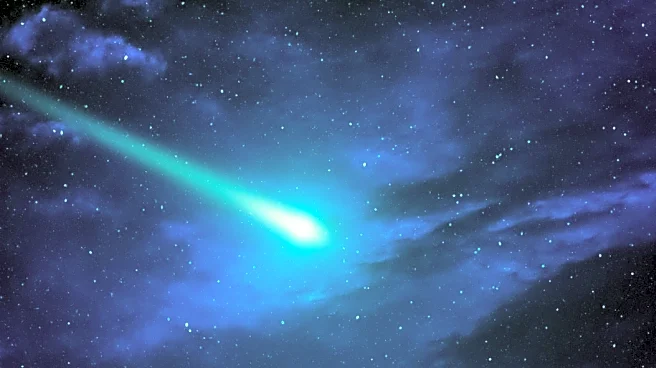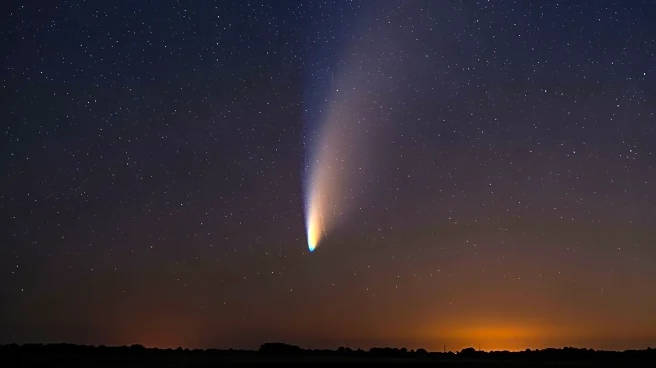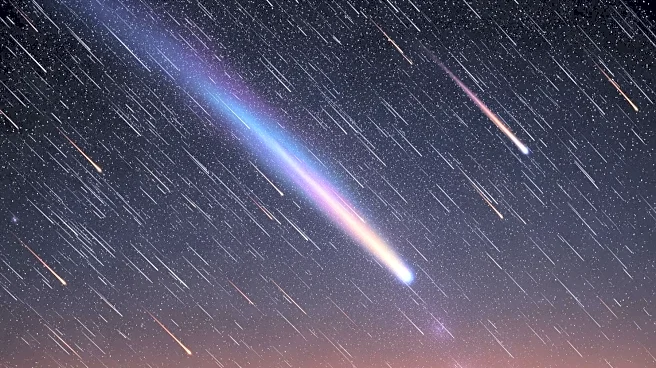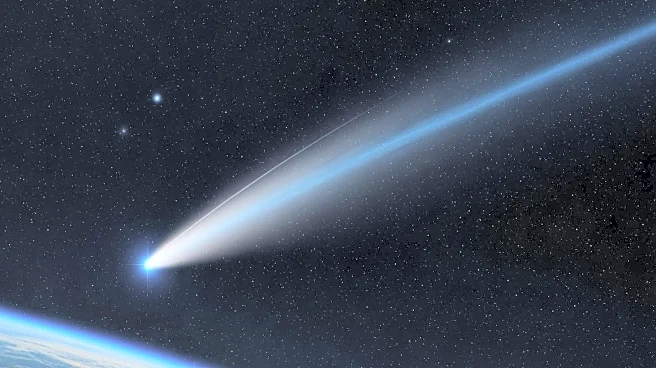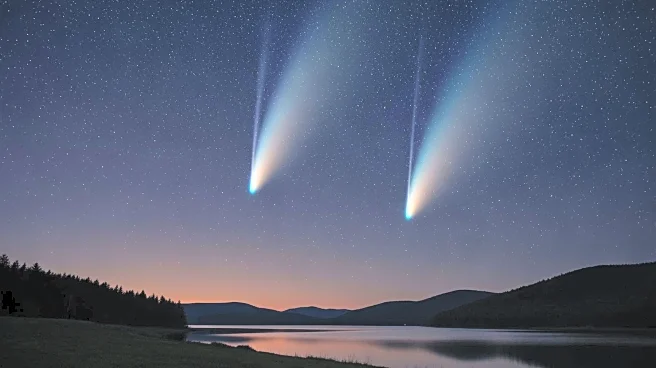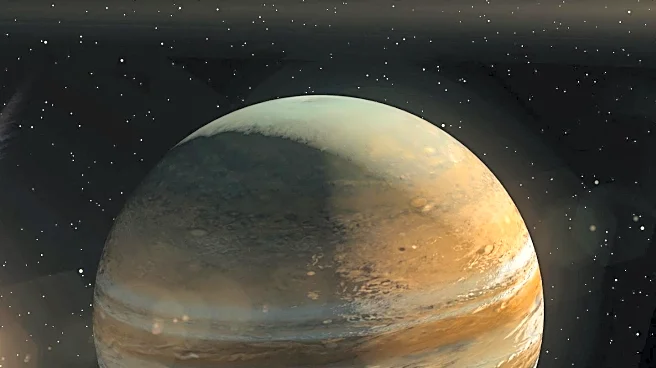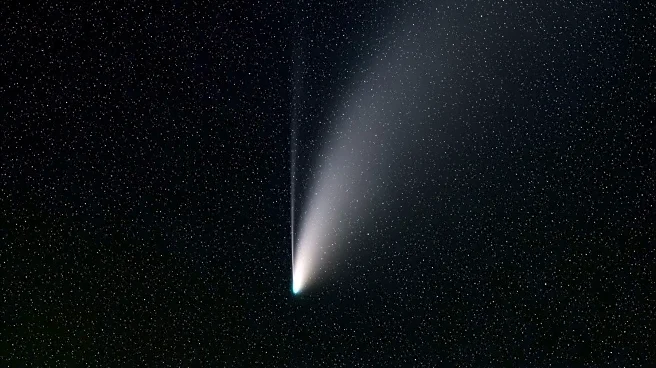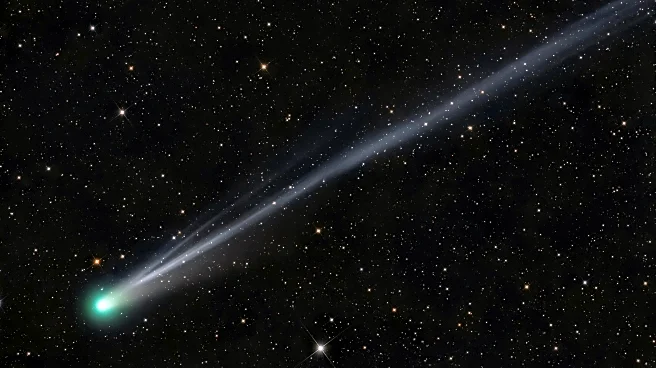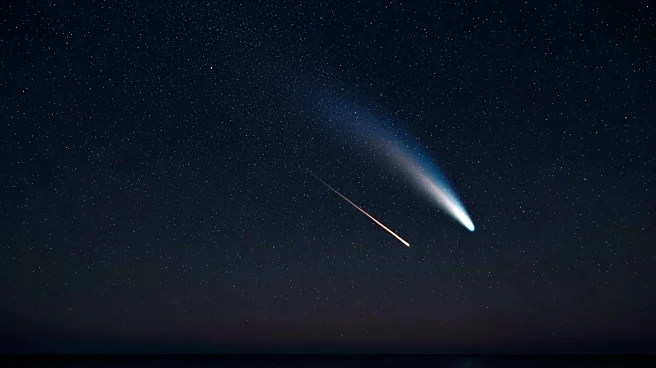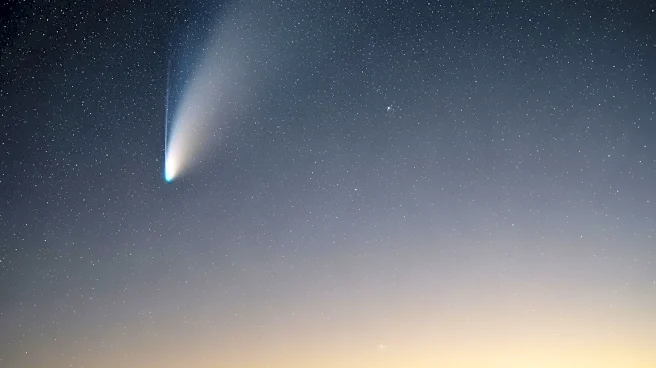What's Happening?
Skywatchers are set for a celestial spectacle as Comet Lemmon (C/2025 A6) and Comet SWAN (C/2025 R2) approach their brightest phase on Sunday, October 19, 2025. These comets will be visible in the night
sky, coinciding with the Orionid meteor shower and a new moon, which provides ideal dark conditions for viewing. Comet Lemmon, discovered at the Mount Lemmon Observatory in Arizona, will pass approximately 55.4 million miles from Earth on October 21. It will be visible in the northwestern sky, appearing as a fuzzy greenish glow due to diatomic carbon molecules in its coma. Comet SWAN, slightly dimmer, will be visible in the southwestern sky. Both comets can be observed with binoculars, and astronomers suggest using a 'banana-shaped' curve along the Big Dipper's handle to locate Comet Lemmon.
Why It's Important?
The appearance of Comet Lemmon and Comet SWAN offers a rare opportunity for amateur astronomers and the general public to witness celestial phenomena without the need for advanced equipment. This event highlights the dynamic nature of our solar system and provides educational opportunities about cometary science and astronomy. The timing with the Orionid meteor shower enhances the experience, potentially increasing public interest in space and science. The visibility of these comets also underscores the importance of dark sky preservation, as light pollution can significantly hinder the observation of such events.
What's Next?
As Comet Lemmon and Comet SWAN make their closest approach to Earth, astronomers and enthusiasts will continue to track their paths using digital tools and apps. The comets' visibility will peak this weekend, and as they move away from Earth, their brightness will diminish. Observers are encouraged to take advantage of the current conditions, as moonlight interference will increase later in October. The event may inspire further interest in astronomy and could lead to increased participation in stargazing activities and events.
Beyond the Headlines
The presence of Comet Lemmon and Comet SWAN in the night sky serves as a reminder of the vastness and complexity of our solar system. It also highlights the role of observatories and amateur astronomers in discovering and tracking celestial bodies. The event may prompt discussions on the impact of light pollution on astronomical observations and the importance of preserving dark skies for future generations.
